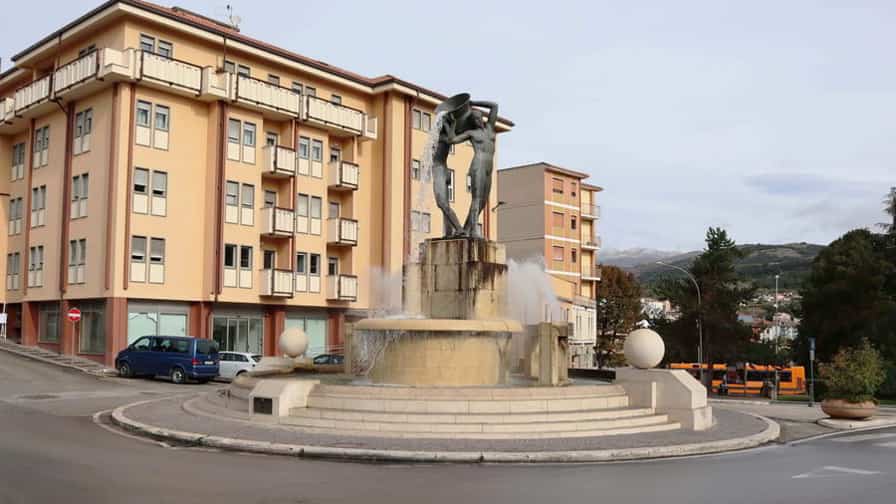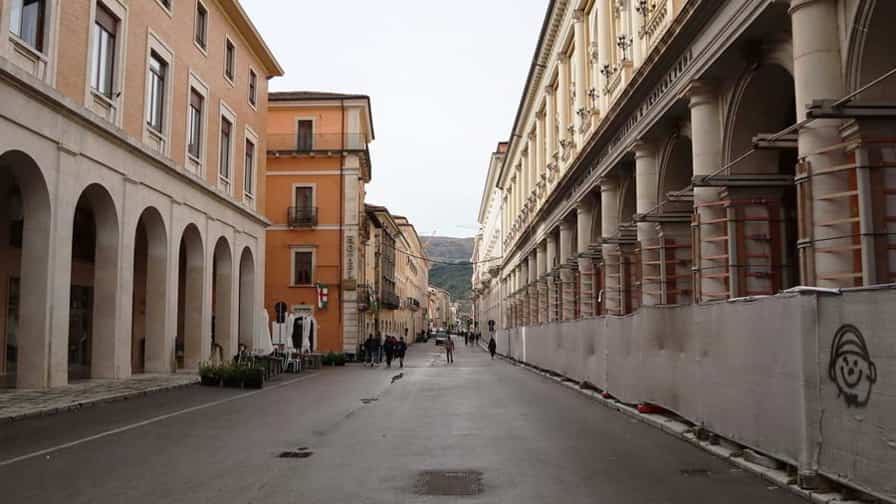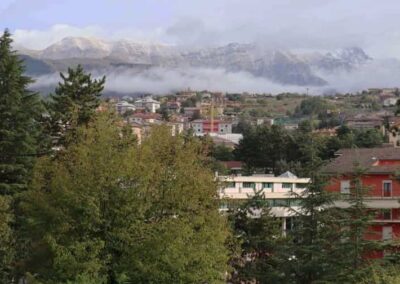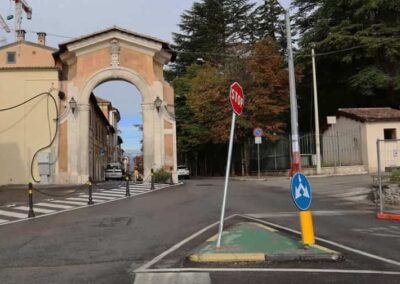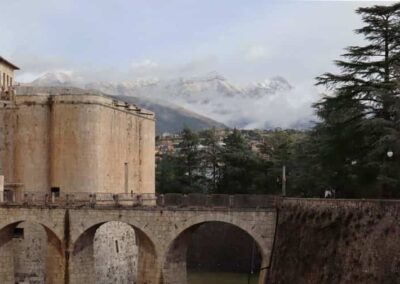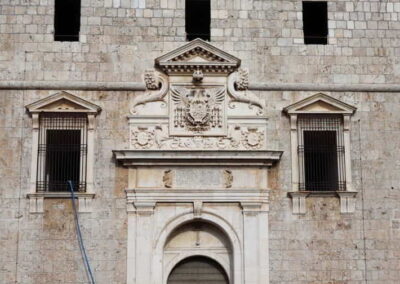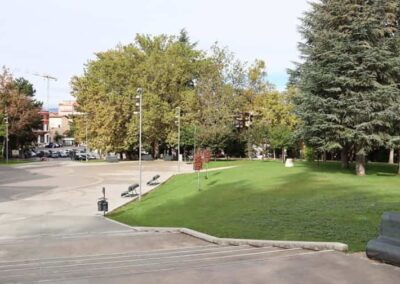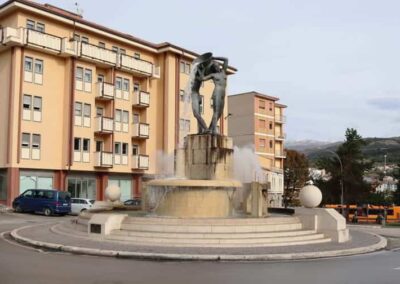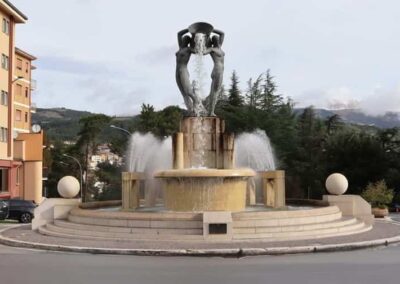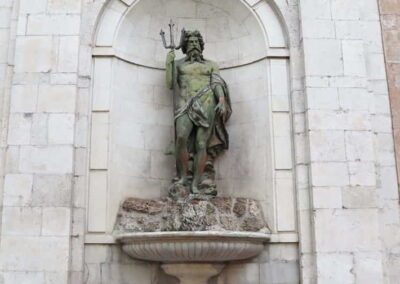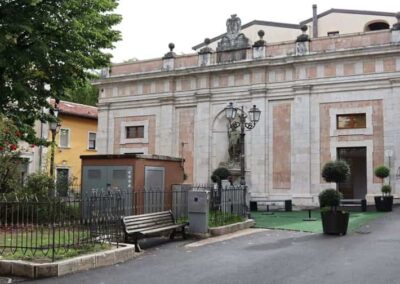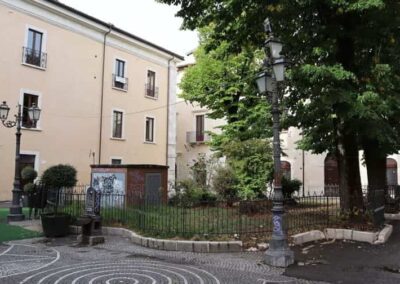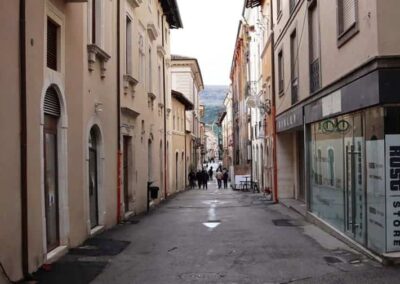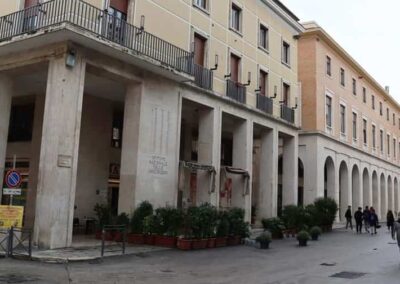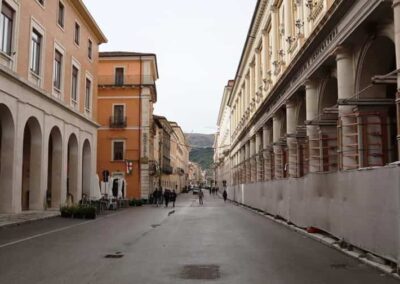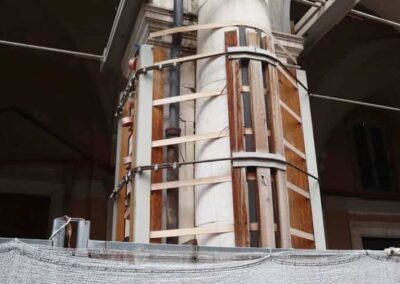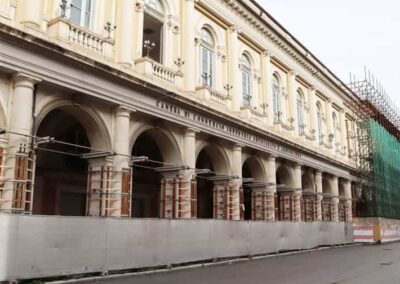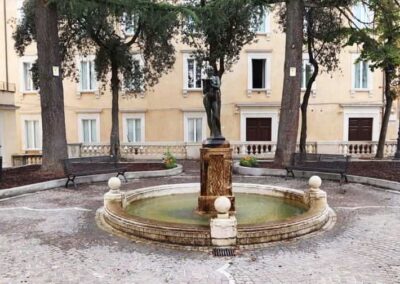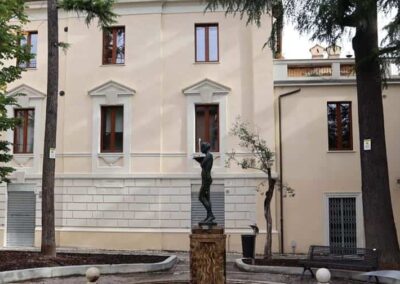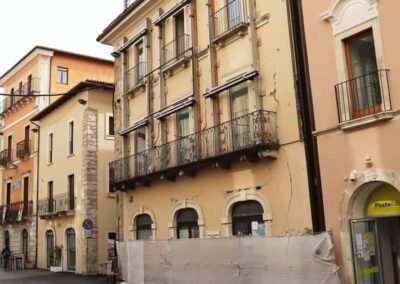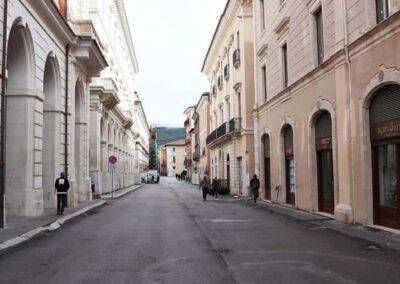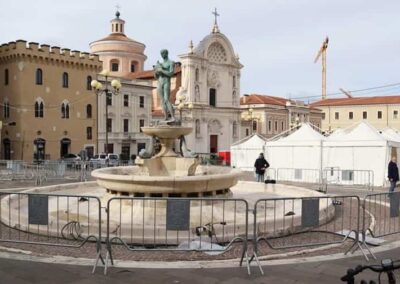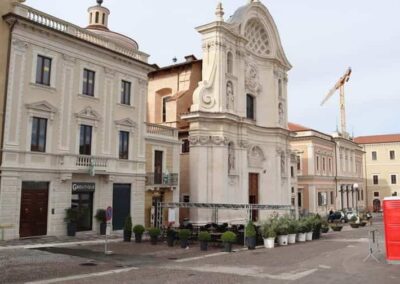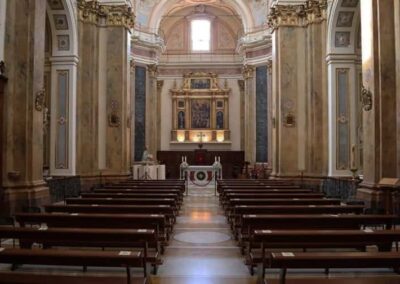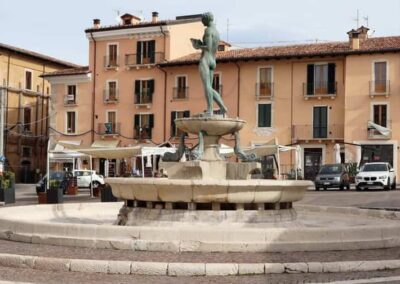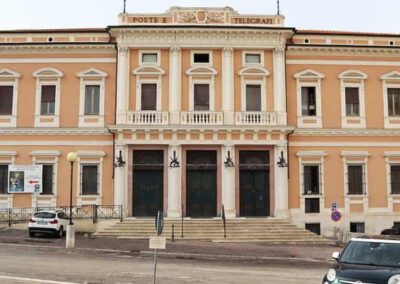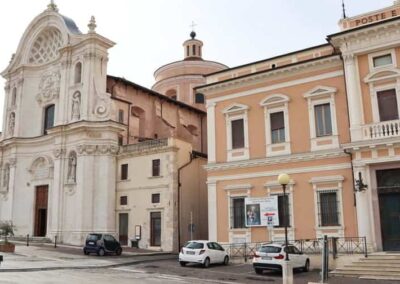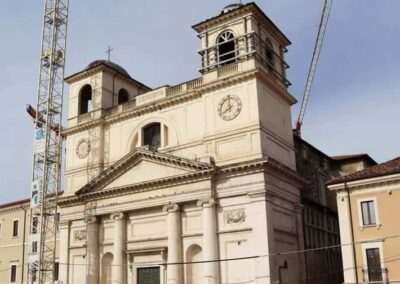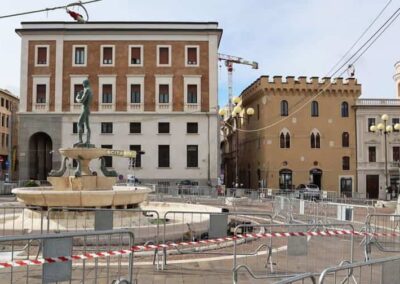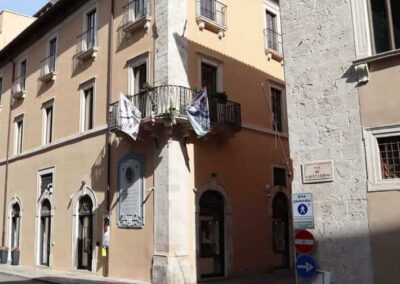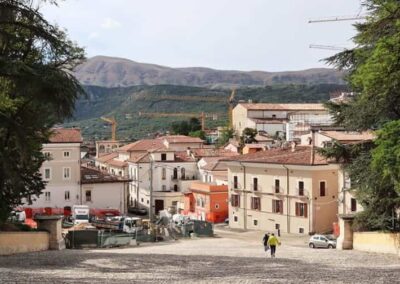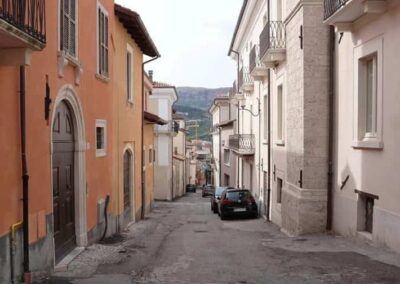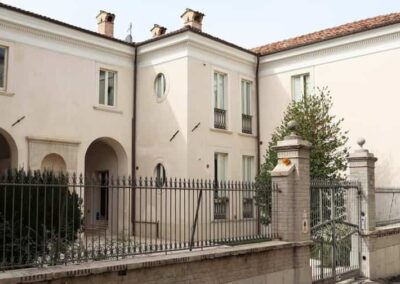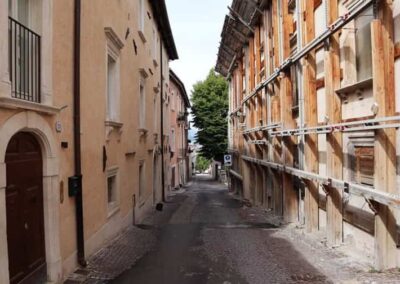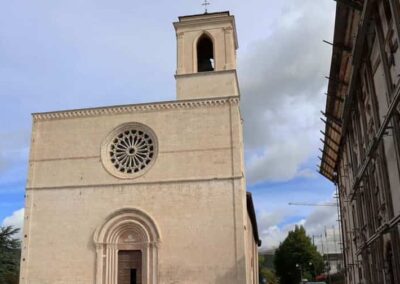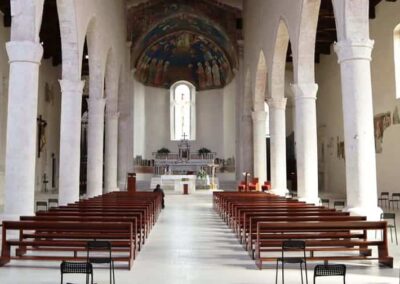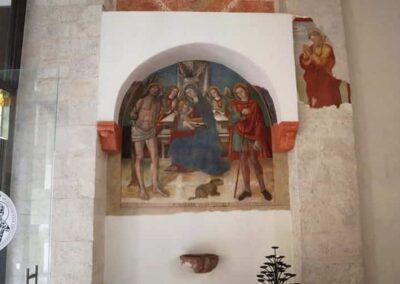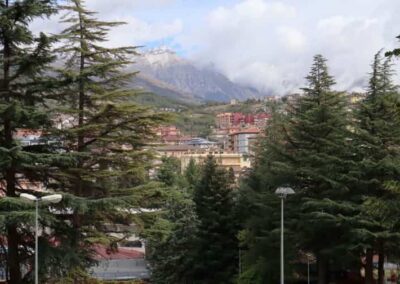HOME
THE REGIONS OF ITALY
PLACES IN ITALY
Italy in Photos
Via S. Bernardino, 67100 L’Aquila AQ, Italy (September 2020)
L’Aquila
L’Aquila, the capital city of the Abruzzo region in central Italy, is a place where history, culture, and natural beauty converge. Nestled at the foothills of the Apennine Mountains and surrounded by picturesque landscapes, L’Aquila is known for its rich medieval heritage, vibrant academic life, and stunning mountain views. Despite enduring a devastating earthquake in 2009, the city has been in a process of remarkable recovery, blending its deep-rooted past with a forward-looking spirit. Founded in the 13th century, L’Aquila’s history is woven into its name, which translates to “The Eagle” in Italian. The city’s origins are closely tied to the Holy Roman Emperor Frederick II, who played a key role in its development. Built as a strategic stronghold and a flourishing economic centre, L’Aquila quickly became a cultural hub in medieval Italy. Its layout, a grid-like structure uncommon for medieval towns, was designed to accommodate the 99 castles from nearby villages that contributed to the city’s founding. The influence of this past is still evident today, as L’Aquila retains its medieval core, filled with impressive churches, fortresses, and palazzos. One of the city’s most iconic landmarks is the Basilica di Santa Maria di Collemaggio. Built in the 13th century, this stunning basilica, with its distinctive Romanesque façade and rose window, is a masterpiece of medieval architecture. It also holds significant historical and religious importance, as it was the site of the coronation of Pope Celestine V in 1294. The basilica is also closely linked to the Perdonanza Celestiniana, an annual celebration that grants absolution to pilgrims, an event inscribed on UNESCO’s list of Intangible Cultural Heritage of Humanity.
Another architectural gem is the Forte Spagnolo, (Spanish Fortress), a massive 16th-century fortress that dominates the city’s skyline. Built during Spanish rule to protect the city from uprisings, it now houses the National Museum of Abruzzo. While it suffered significant damage during the 2009 earthquake, the fortress remains a symbol of L’Aquila’s resilience and historical importance. From the fortress, visitors can enjoy panoramic views of the surrounding mountains, including the majestic Gran Sasso, the highest peak in the Apennines. L’Aquila is also known for its vibrant cultural and academic life, driven by its prestigious University of L’Aquila. Established in the 16th century, the university attracts students from across Italy and Europe, adding youthful energy to the city’s intellectual atmosphere. The city hosts a variety of cultural events, including music festivals, art exhibitions, and theatrical performances, making it a lively centre of activity throughout the year.
Despite the destruction caused by the 2009 earthquake, L’Aquila’s ongoing restoration efforts are a testament to the city’s resilience. The rebuilding process has been meticulous, aiming to restore the city’s historic structures while incorporating modern safety measures. This juxtaposition of the old and new can be seen throughout the city, where centuries-old buildings stand alongside newly reconstructed ones. L’Aquila’s natural surroundings further enhance its appeal. Located near the Gran Sasso e Monti della Laga National Park, the city is a gateway for outdoor enthusiasts who enjoy hiking, skiing, and exploring the rugged beauty of the Apennine Mountains. The park is home to diverse wildlife, including wolves and chamois, and offers some of Italy’s most breathtaking alpine scenery. L’Aquila is a city that embodies both the scars of its past and the hope of its future. Its medieval charm, coupled with its ongoing renaissance, makes it a unique destination for those looking to explore a part of Italy that is rich in history, culture, and natural splendour. Whether wandering through its ancient streets, visiting its historical landmarks, or exploring its mountainous surroundings, L’Aquila offers a journey through time and resilience.
Worth a Visit
Piazza Battaglione degli Alpini in L’Aquila is a central and symbolic urban space, deeply connected to the city’s modern identity and collective memory. Located not far from the historic core, the square honours the Alpini, Italy’s renowned mountain infantry corps, whose history is closely intertwined with the Abruzzo region and its rugged Apennine landscape. The dedication of the piazza reflects both respect for military tradition and the gratitude of the local community toward those who have served and sacrificed, particularly in times of conflict and in moments of national need. The Alpini have long been admired throughout Italy for their resilience, discipline, and strong bond with mountainous territories. In Abruzzo, where the mountains define much of daily life and culture, the connection feels especially profound.
The devastating earthquake of April 6, 2009, profoundly changed the appearance and life of Corso Vittorio Emanuele. Many of the historic buildings along the street were severely damaged or left uninhabitable, and the once bustling heart of the city became largely inaccessible. The silence that fell over the Corso after the disaster was a stark reminder of the earthquake’s impact, not only on architecture but also on the social and cultural fabric of L’Aquila. Yet, even in those dark years, Corso Vittorio Emanuele remained a symbol of resilience, a reminder of what needed to be restored for the city to regain its vitality. Reconstruction work along the Corso has been one of the most complex and significant aspects of L’Aquila’s post earthquake recovery. Restoring centuries-old palazzi, repairing façades, and making structures safe required enormous effort, technical skill, and collaboration between local authorities, national institutions, and international support.
Piazza Duomo in L’Aquila is one of the city’s most important and symbolic public spaces, a square that has long stood at the heart of civic, social, and religious life. Surrounded by elegant buildings and overlooked by the Cattedrale dei Santi Massimo e Giorgio, the city’s main cathedral, the piazza has traditionally been the place where history, faith, and daily life converge. Its size, centrality, and monumental character have made it not only the geographic core of L’Aquila but also a key stage for markets, celebrations, and civic gatherings throughout the centuries. The origins of Piazza Duomo date back to the medieval foundation of L’Aquila in the thirteenth century.
Photo Gallery of Walk 1 – Via Pescara to Piazza Nove Martiri
Approximately 1.62 km – 1.00 miles
The walk starts in Via Pescara – Via Castello – Parco del Castello – Piazza Battaglione degli Alpini – Piazza Regina Margherita – Corso Vittorio Emanuele – Via Navelli – Corso Vittorio Emanuele – Piazza Nove Martiri
Photo Gallery of Walk 2 – Via Sallustio to Viale Nizza
Approximately 1.97 km – 1.22 miles
The walk starts in Via Sallustio – Corso Vittorio Emanuele – Piazza Duomo – Corso Vittorio Emanuele – Via S. Bernardino – Via Fortebraccio – Via S. Bernardino – Walk back along Via S. Bernardino to Corso Vittorio Emanuele – Via Giuseppe Garibaldi – Via Paganica – Via Giuseppe Garibaldi – Piazza S. Silvestro – Chiesa di San Silvestro,Piazza S. Silvestro – Via Porcinari – Viale Duca degli Abruzzi – Viale Nizza
COPYRIGHT © 2018-2025 ITALY IN PHOTOS - ALL RIGHTS RESERVED
